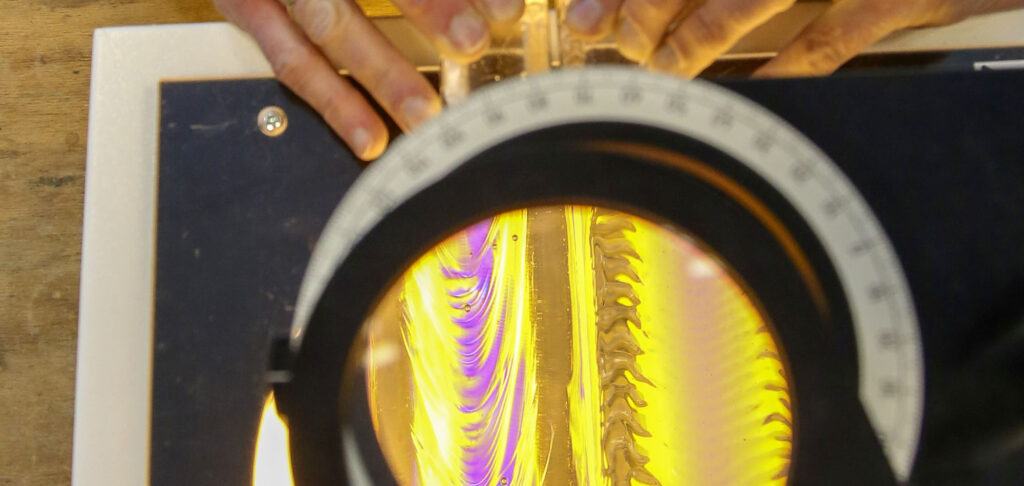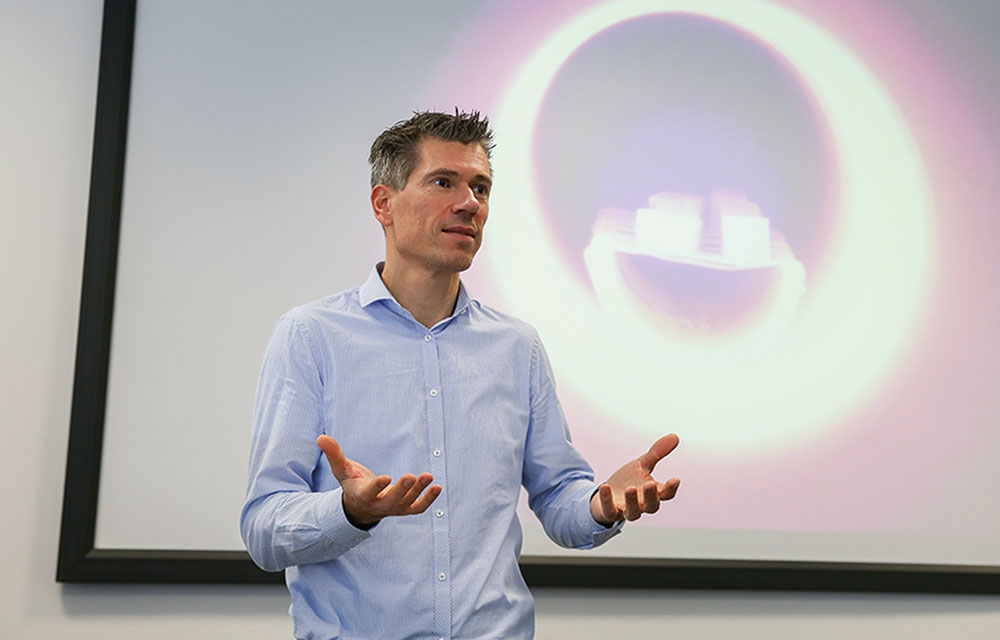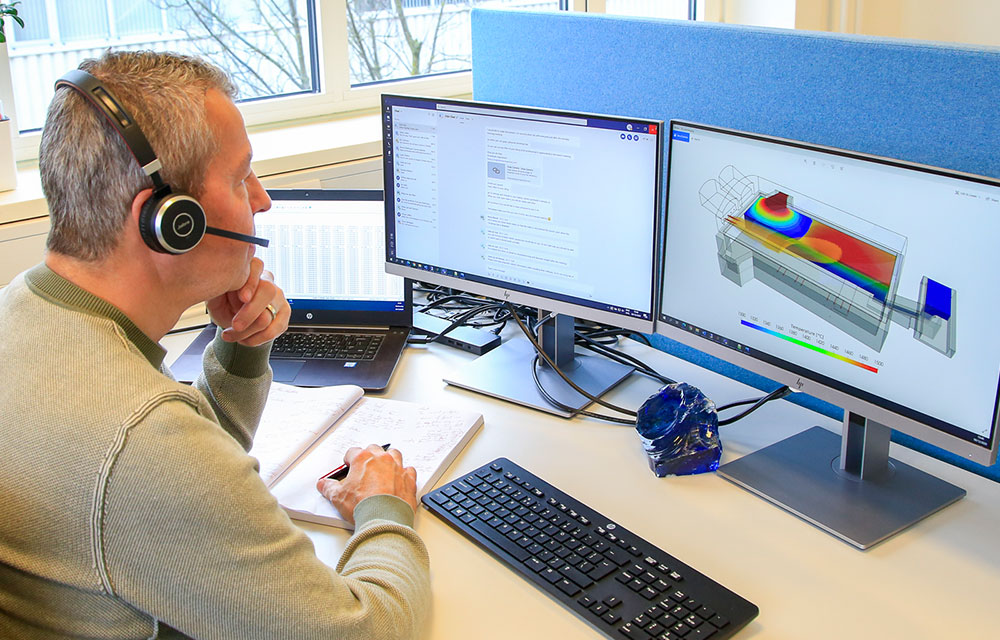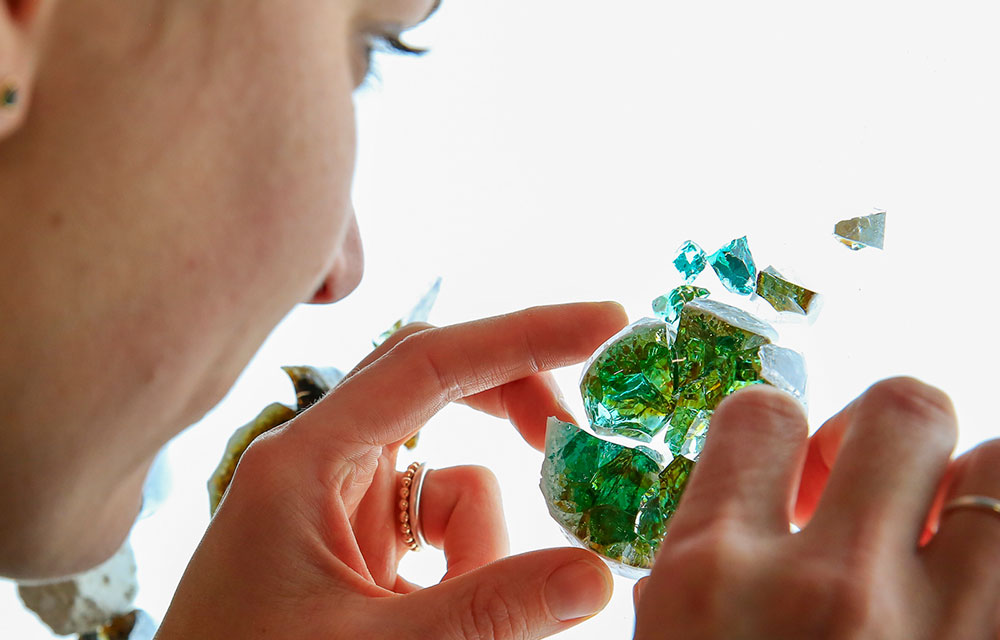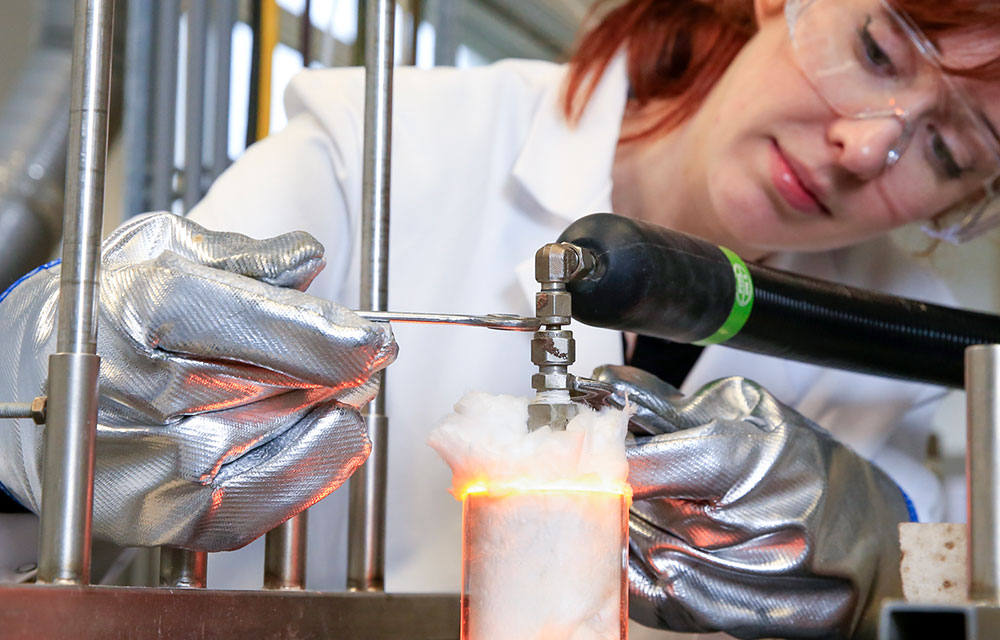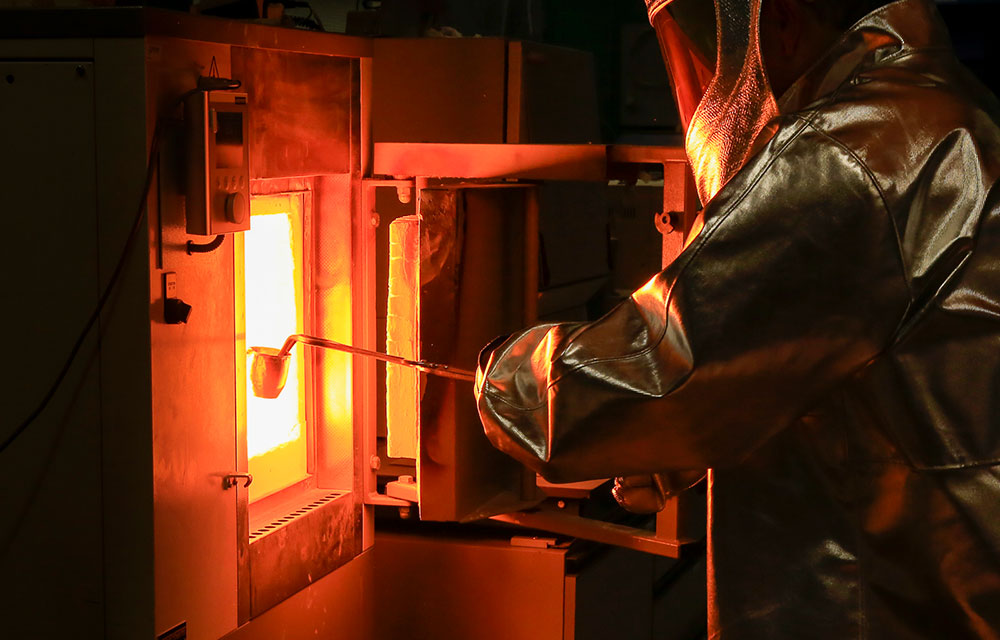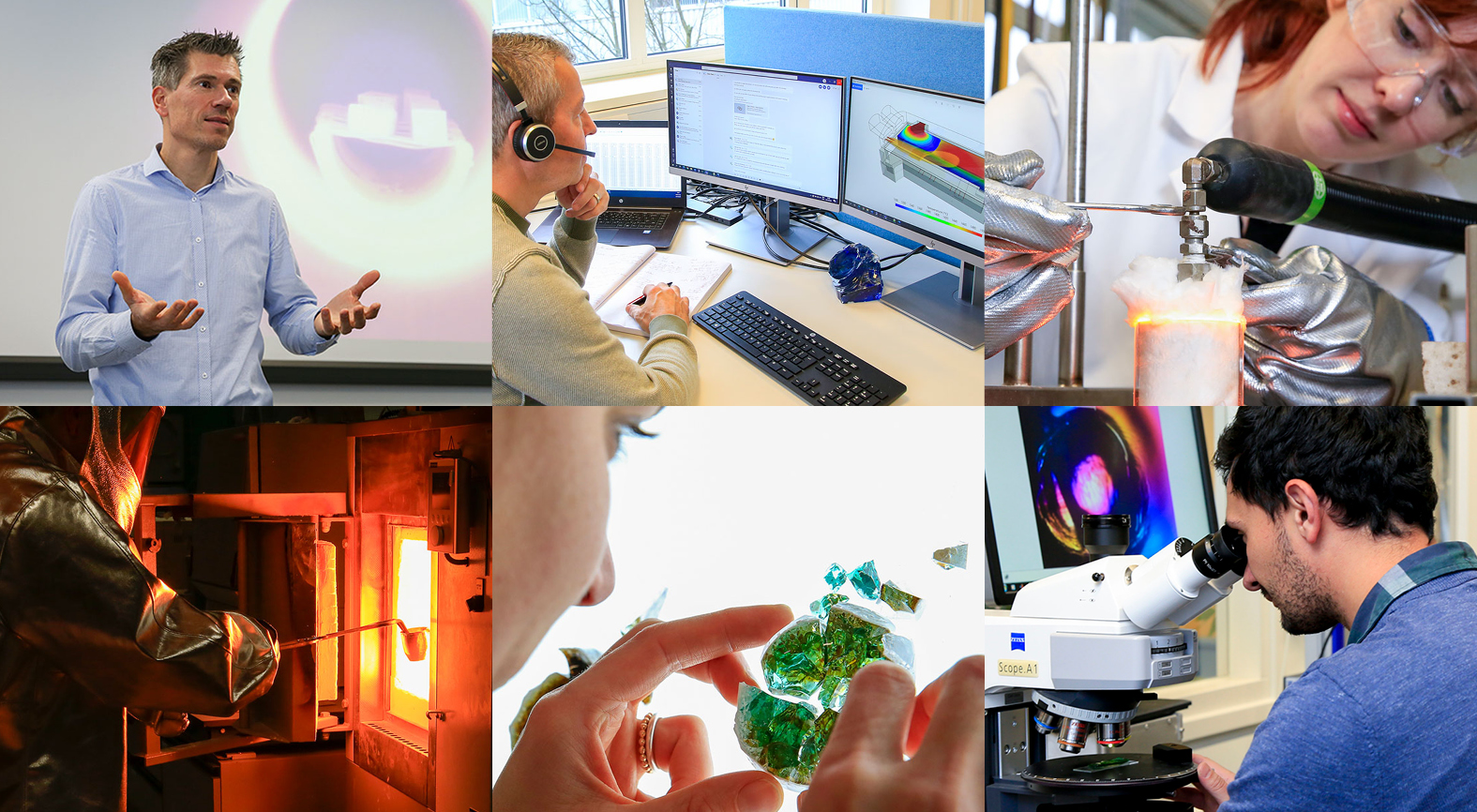Laboratory
We are proud to work in what once was Philips Glass Research labs, where our high tech equipment and services are available for our customers.
Our lab provides better understanding of industrial melting processes and causal relations with regard to product quality.
The CelSian team consists of experts with broad knowledge on glass melting and forming processes. Furthermore, CelSian has a laboratory with extensive experimental capacities, including modern analytical equipment, process simulation models, dedicated laboratory set-ups, extended databases and sensors.
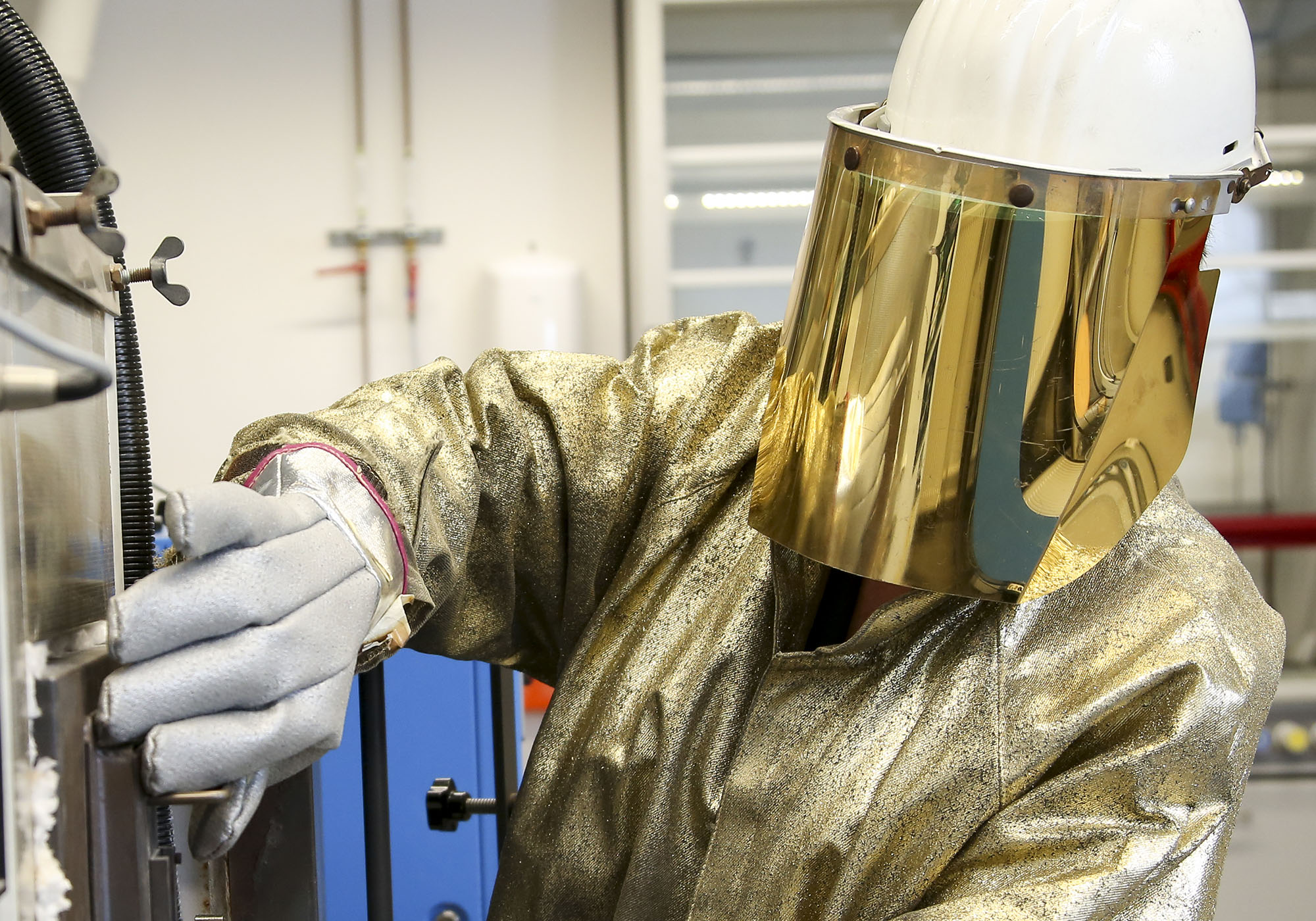
Based on your batch we run a melting trial to determine the reaction energy. Ideal to compare different formulations in relation to energy requirements. As an absolute value, or to compare the energy requirement of different batches.
With our HTMOS-EGA equipment we analyze glass forming raw material batches during heating process up to 1600 °C and observe foaming & bubble formation. We report on:
- Identification gas evolving reactions in batch
- On-set of fining (fining onset temperature)
Bubble growth & ascension in melt - Foam evolution
- Foam decay
- Effect of furnace atmosphere on fining
- Effect of furnace atmosphere on redox
- Effect of furnace atmosphere on foaming
- Pelletizing
- Briquetting
- Milling & Sieving
- Activation of batch materials by mechanical pretreatment of batch
- Batch melting tests 10-10000 grams
- To develop new glass types
- For glass samples e.g. glass bars, ingots
- In different furnace atmospheres
- Batch heat diffusion (l/r·cp) measurements
- Simulation of batch blanket: 5-10 cm
- Measuring temperatures at different levels from heated plate as function of time
- Movies of bubbles in molten glass
- Fining onset temperature
- Monitoring bubble size and ascension
- Effect of furnace atmosphere of bubble removal
- Effect of batch composition and fining agents on bubble behavior
- Helium extraction of dissolved gases from glass melts
- Determination dissolved gases (N2, SO2, CO2) in production glasses
- Determination of dissolved gases in saturated melt (solubility measurements: N2, CO2, SO2, O2)
For regenerator simulations with simulated glass furnace flue gases (1400-500 °C)
- Flue gases with water vapor, O2 or CO, N2, CO2, salt vapors (Na or K vapors), SO2
- Different refractory qualities (based on MgO, Al2O3, ZrO2, Cr2O3, SiO2 or combinations of these refractory oxides) and binding phases in refractory
- Chemical attack of these refractory materials depending on flue gas composition, reducing/oxidizing conditions and temperature
- Rotating refractory finger in melt (comparative tests
- Standard refractory tests for glass melt contact
- Determination of time for complete melting of batch (no crystalline inclusions in melt) at isothermal conditions
- Typical temperatures 1350, 1400, 1500 °C
- Effect of batch composition on BFTEffect of grain sizes on BFT
- Effect of batch pretreatment (pelletizing, humidification) on BFT
- Effect of melting flux additions on BFT
- Determination dissolved gases (N2, SO2, CO2) in production glasses
- Determination of dissolved gases in saturated melt (solubility measurements: N2, CO2, SO2, O2)
- Determination chemical activity of volatile glass species in melt
- Evaporation rates and detection of volatile species, depending on:
- Glass composition
- Impurities in glass
- Furnace atmosphere
- Gas velocity above melt
- Temperature
- Time
- Surface tension and glass melt density by sessile drop (up to 1250 °C)
- Surface tension by capillary bubbling, up to 1550 °C
- Leaching tests: Composition of leaching solution, leaching tests of glass or glass cullet
- Water / Hot water
- Acideous solutions or Alkaline solution
- Alcohol containing solutions
- Effect of type of cullet on pO2 (redox state)
- Effect of fining agents
- Effect of oxidants or reducing agents on melt
Click here for an overview on PDF of our standard equipment.
